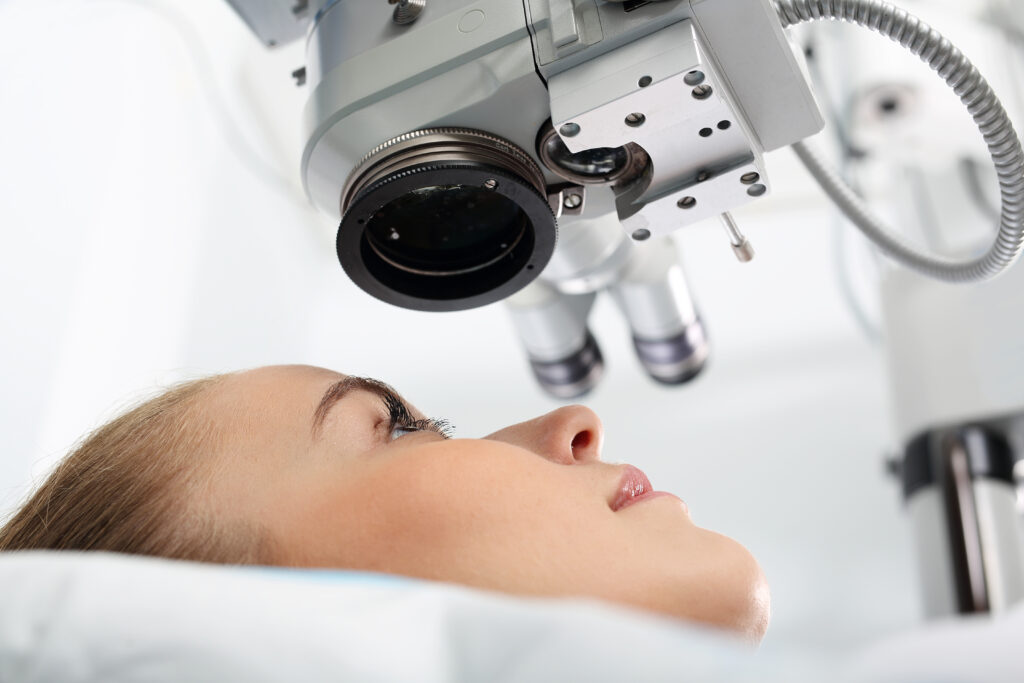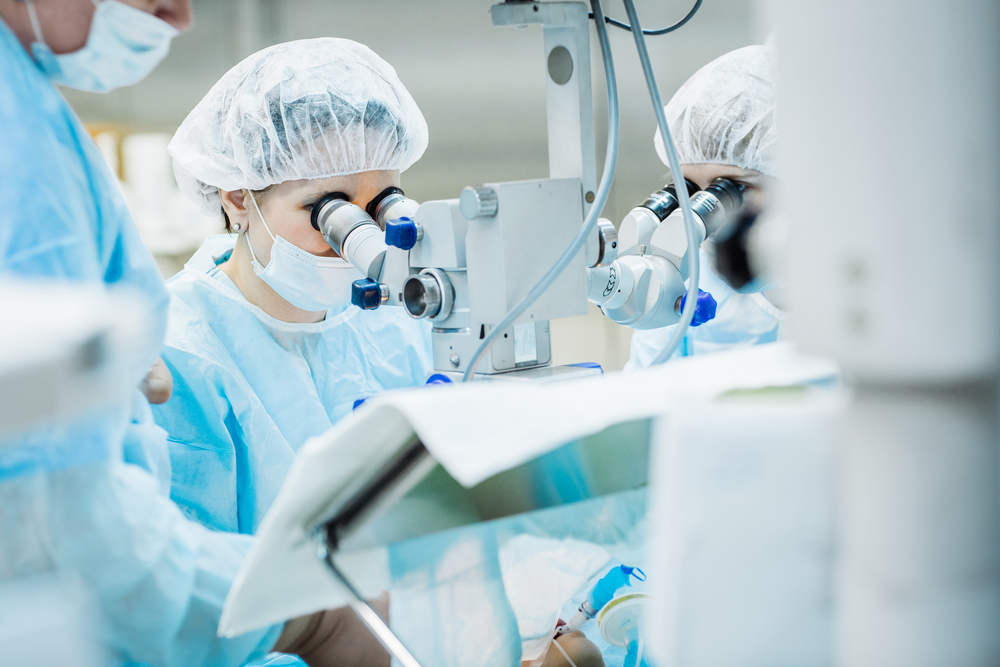Do you want to live a life free from glasses or contact lenses? SMILE laser eye surgery could be the answer.
While glasses or contact lenses help you see clearly, they’re only temporary solutions. SMILE is a permanent vision correction procedure that reduces or eliminates the need for prescription lenses.
Keep reading to learn more about SMILE, including who may be a good candidate for the procedure and how it compares to other refractive procedures!
What is SMILE?
The cornea is the transparent tissue at the front of the eye. It works together with your lens to focus light properly.

The cornea lets light into your eye and then bends or refracts it to create sharp, clear images on your retina. An irregular cornea shape, as well as an eye that is too short or too long, can cause images to be unfocused, leading to blurry vision.
This is called a refractive error. Small incision lenticule extraction, or SMILE, works by reshaping the curvature of your cornea to correct the way light lands on the retina.
Reshaping the cornea restores normal refraction, giving you crisp vision again. SMILE is a vision correction procedure used to address astigmatism and nearsightedness.
After SMILE, many patients are able to see clearly without glasses and contact lenses, allowing them to experience true visual freedom.
How Does SMILE Work?
Your SMILE surgeon will start by administering anesthetic eye drops to numb your eye. The numbing drops ensure you are comfortable during the procedure.

Your SMILE surgeon will then use a special instrument called a speculum to ensure your eye remains open throughout the procedure. Next, the surgeon will use a high-precision laser to create a lenticule, which is a tiny disc of corneal tissue, below the surface of the cornea.
The lenticule is almost the size of a contact lens and is made without disturbing the surface of your cornea. The thickness of the lenticule will depend on your refractive error.
Your SMILE surgeon will also use a laser to create a tiny opening in the cornea’s surface to remove the lenticule. Extracting the lenticule changes the shape of your cornea and corrects your refractive error.
For SMILE, these include astigmatism and nearsightedness. The procedure typically takes around twenty minutes to complete.
Who is a Good Candidate for SMILE?
SMILE has requirements that increase its chances of success and make it safer for you. You may be a suitable SMILE candidate if:
- You’re at least eighteen years
- You’re good general health
- Your eyes, including corneas, are healthy
- You’re nearsighted and have a prescription within a correctable range
- Your prescription has remained stable for at least a year
- You have realistic expectations of what SMILE can achieve
How Does SMILE Compare to LASIK?
SMILE and LASIK are both highly effective and safe vision correction procedures. They’re also similar in that both correct your vision by reshaping your cornea.
However, there are differences between the two surgeries, including:
Method For Correcting Vision
The method in which the cornea is reshaped is different with each procedure. No flap is made in SMILE.

Instead, the refractive surgeon creates a lenticule inside your cornea. The lenticule is pulled out through a tiny incision on the cornea, correcting your refractive error.
In LASIK, the LASIK surgeon uses a laser to create a thin flap of tissue in the cornea. Then, they lift and fold back the flap to reveal the underlying corneal tissue known as the stroma.
Next, your SMILE surgeon modifies the stroma by removing some corneal tissue in order to correct your refractive error. Once done, the surgeon carefully returns the flap, flattening it into place.
The corneal flap acts as a natural bandage as the surgical site heals.
Refractive Errors
LASIK corrects farsightedness, nearsightedness, and astigmatism. On the other hand, SMILE can only address nearsightedness and astigmatism.
Why Choose SMILE Over LASIK?
Although one procedure is not better than the other, there are some reasons why someone may choose SMILE instead of LASIK, such as:
Decreased Dry Eye Symptoms
The flap created during LASIK may worsen your dry eyes or increase your risk of dry eyes. Experienced surgeons practice the highest levels of safety and use advanced technologies when making a flap.
Still, some corneal nerves are damaged in the process, leading to dry eyes. There’s no flap made in SMILE.
So, fewer corneal nerves that stimulate tear glands are affected. That’s why SMILE is less likely to cause dry eyes or exacerbate your dry eye symptoms.
Safer for Very Thin Corneas
When you have very thin corneas, the refractive surgeon can’t successfully perform LASIK. Your corneas must be thick enough as some of it is removed during surgery.
If your corneas are too thin, having LASIK could lead to complications like corneal ectasia. Post-LASIK, your cornea may destabilize and start to change shape, gradually or quickly causing corneal ectasia.
In corneal ectasia, your cornea weakens and bulges outward. Symptoms of corneal ectasia include:
- Vision that progressively worsens
- Double vision
- Halos and glare
- Blurry vision
SMILE can be an option if you’re not a LASIK candidate due to thin corneas. Because no flap is created in SMILE, much of the outer corneal layer or epithelium remains intact.
This makes the procedure safer if your corneas are too thin.

Better Option for Athletes or Those Who Are Active
Flap complications are among the most significant problems linked to LASIK. The flap can get displaced or dislodged with eye trauma.
SMILE eliminates the likelihood of flap-related problems. With no risk of flap displacement even after eye trauma or direct injury, SMILE can be the best procedure for athletes, military personnel, and those involved in contact sports like martial arts, netball, and rugby.
Attain Your Personal Best Vision with SMILE
SMILE can be an excellent option if you’re tired of depending on prescription lenses. With SMILE at Cheema MD Eye Care, you can say goodbye to glasses or contact lenses and hello to crisper, sharper vision.
Are you interested in learning more about SMILE? Schedule an appointment at Cheema MD Eye Care in Kingston, NY, today to find out if it’s right for you.



